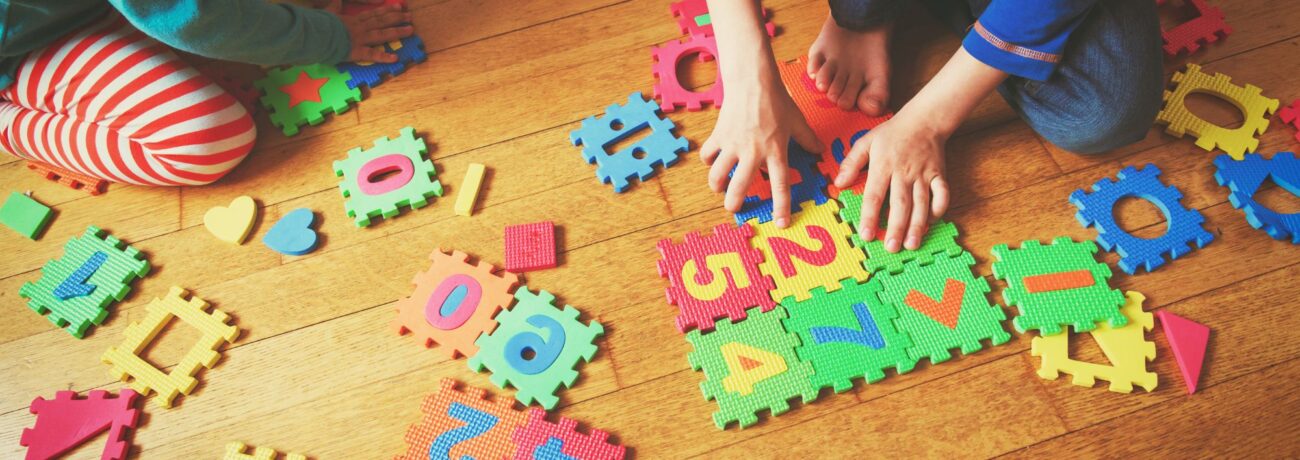How ABA and Play Therapy Work Together to Support Children with Autism
Autism Spectrum Disorder (ASD) affects everyone, regardless of gender, status, and race. According to estimates from the CDC’s Autism and Developmental Disabilities Monitoring (ADDM) Network, approximately 1 in 36 children are diagnosed with autism spectrum disorder (ASD) emphasizing the need for effective therapies to help children with communication, emotional regulation, and social skills. ABA (Applied Behavior Analysis) and Play Therapy are both proven approaches that offer distinct benefits. When used together, they provide comprehensive support for children with autism, addressing both behavioral and emotional.
What is ABA Therapy?
Applied Behavior Analysis (ABA) is one of the most widely recognized and researched therapeutic approaches for children with Autism Spectrum Disorder (ASD). It focuses on using principles of learning theory to change socially significant behaviors, fostering skills that help children become more independent and capable in their everyday lives.
Key Techniques Used in ABA Therapy
ABA therapy includes a variety of techniques that focus on behavior change, skill acquisition, and emotional development. Some of the most common techniques include:
- Discrete Trial Training (DTT): DTT involves breaking down a skill into small, discrete steps. Each step is taught systematically with a clear beginning, middle, and end. This structured approach ensures that the child is exposed to frequent practice opportunities.
- Natural Environment Training (NET): Unlike DTT, which is more structured, NET involves teaching skills in natural settings such as the child’s home or school. This method helps children apply learned skills to real-world situations.
- Modeling: The therapist demonstrates a behavior or skill for the child to imitate. This helps the child understand what is expected and gives them an example.
- Verbal Behavior Therapy (VBT): This focuses on teaching communication skills by linking words to their meaning to help children express their needs more effectively.
Benefits of ABA Therapy
It effectively enhances communication, social skills, independence, and behavior in children with autism. It improves verbal and non-verbal communication, encourages positive social interactions, fosters self-sufficiency through daily tasks, and reduces problematic behaviors like aggression and tantrums. This therapy creates a more positive environment for the child and those around them.
What is Play Therapy?
Play therapy is a therapeutic approach primarily used with children, where play is utilized as a medium to help children express their feelings, learn new skills, and process complex emotions. It can provide a safe environment where children feel understood and supported.
Core Principles of Play Therapy
Play therapy relies on the concept that children express themselves most effectively through play, as it provides them with a non-threatening and comfortable outlet for communication. Through play, children can act out scenarios that help them understand and resolve emotional or psychological issues.
The core principles of play therapy include:
- Therapeutic Relationship: Building trust between the therapist and the child is central. This relationship is a foundation for helping children feel comfortable and open up.
- Non-directive Approach: also known as client-centered therapy), children are encouraged to express themselves freely through play, and the therapist serves as a supportive observer, guiding the child’s exploration without imposing structure.
- Directive Approach: In this form, the therapist provides specific tasks or activities to achieve certain therapeutic goals. The therapist may structure the play to help the child deal with specific issues, such as anxiety or trauma.
- Symbolism: Toys and other play materials act as symbols that children use to express feelings, fears, and wishes. For example, dolls or action figures can allow a child to act out situations, helping the therapist understand their emotional state.
Types of Play Therapy
There are several types of play therapy, each with different approaches to fostering emotional healing:
- Non-directive Play Therapy (Child-Centered Play Therapy): Children can choose their play activities, allowing them to express themselves organically. The therapist provides a safe environment and observes, supporting the child’s choices.
- Directive Play Therapy: The therapist takes a more active role, guiding the child through specific tasks to address emotional or behavioral issues. This approach is more structured and goal-oriented.
- Theraplay: A structured, interactive therapy that builds positive relationships and attachment between the child and caregiver. It often involves physical activities like games and can be used with children with attachment difficulties.
- Floortime: A technique that involves engaging with the child at their level, using their interests to guide play. It is especially effective for children with autism, as it helps improve social skills and emotional development.
Benefits of Play Therapy
This type of therapy benefits children by helping them regulate emotions, develop social skills, and express themselves. It promotes cognitive growth through problem-solving activities, while also supporting trauma processing in a safe way. Through role-playing and creative activities, children learn to interact with others, manage feelings, and navigate their inner world, providing valuable insights for therapists.
ABA Therapy vs. Play Therapy: Key Differences
- Approach: ABA is highly structured with techniques like DTT for specific behavioral goals. Play therapy is more flexible, allowing children to guide their play and explore emotions naturally.
- Primary Focus: ABA targets behavior change—improving skills and reducing harmful behaviors. Play therapy focuses on emotional development, helping children process feelings and develop coping strategies.
- Measurability: ABA relies on measurable, data-driven outcomes. Play therapy tracks progress through emotional expression and social engagement, making it harder to quantify.
- Application: ABA is effective for skill acquisition and behavior modification, while play therapy supports emotional regulation and social interaction, especially for non-verbal children.
How ABA and Play Therapy Work Together
- While ABA and play therapy are distinct approaches, they can complement each other to provide a holistic therapeutic experience for children with autism. When integrated thoughtfully, these therapies address behavioral and emotional needs, creating a balanced approach to autism care.
- Training and Technical Assistance (TTA) serves as a crucial bridge between these approaches by:
- Providing practitioners with strategies to integrate play-based activities into ABA sessions seamlessly
- Offering ongoing support to ensure consistent implementation across different therapeutic settings
- Helping therapists adapt techniques based on each child’s unique needs and responses
- Supporting families in maintaining therapeutic approaches at home
For example:
- Using favorite toys in DTT sessions
- Incorporating special interests into skill-building
- Blending structured learning with child-led play
Conclusion
ABA therapy and play therapy each bring unique, invaluable tools to support children with autism—from building critical life skills to encouraging emotional growth. When thoughtfully combined, these approaches create a well-rounded pathway toward independence, self-expression, and social success.
At Champions ABA, we believe every child is a champion. We tailor our evidence-based ABA strategies and play-centered interventions to each child’s unique needs—no cookie-cutter approach. By blending structured techniques with creativity and genuine connection, we enable children to flourish both behaviorally and emotionally.
If you’d like to learn more about how our personalized services can help your child thrive, visit our website or call us at (877) 242-1744. Our dedicated team is here to guide you every step of the way toward a brighter future.
FAQs
How long does it take to see results from combined therapy?
Progress varies by child, but most families notice improvements in engagement within 4-6 weeks. Behavioral changes typically emerge after 3-4 months of consistent therapy. Regular assessments track progress in both behavioral goals and emotional development.
How can parents support both therapies at home?
Parents can reinforce therapy by: structuring playtime with clear objectives, using favorite toys to practice communication skills, following their child’s lead during play while incorporating learned behaviors, and maintaining consistent routines that combine structured activities with free play.
What age is best to start combined therapy?
Early intervention is optimal, typically starting between ages 2-6. However, combined therapy can benefit children at any age, with approaches adapted to the developmental level.



